Jesus with Mary and Martha (1965)
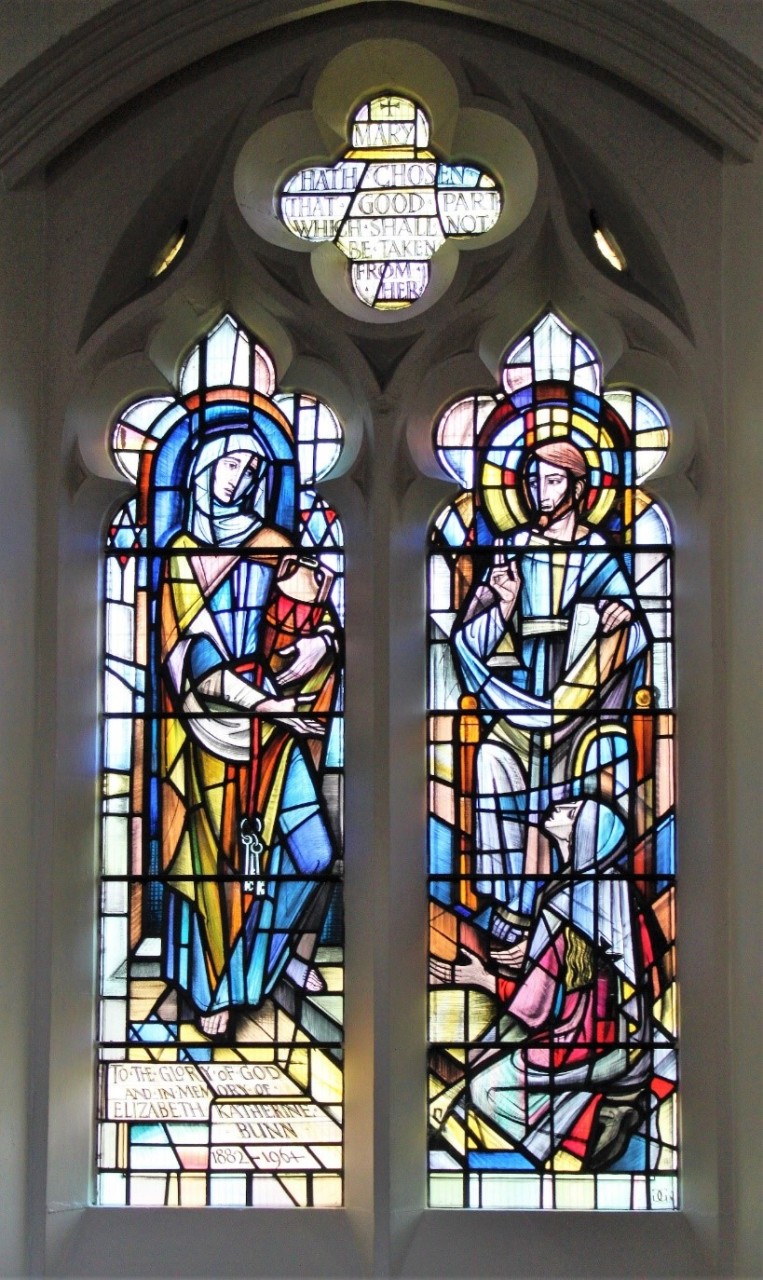
In over a hundred and fifty years of Christ Church New Malden, there have been a number of people who have held key positions with remarkable longevity. Charles Stirling (1865-1892) and William Allen Challacombe (1893-1920) both served as Vicar for 27 years. William Hyde, the first Verger of Christ Church held the position for 34 years (1875-1909), with the fourth Verger, Albert Jones, serving in that role for 29 years (1936-1965). David Burton (1940-70), Reg Ellis (1942-1969) and Atkinson Bachhoffner (1908-33) served as Churchwardens for 30, 27 and 25 years respectively.
Longer than any other ministry at Christ Church, however, is the incredible 46 years that Mrs Elizabeth Katherine Bunn served as Superintendent of the Christ Church Sunday School. When she took up this role in 1909, Elizabeth Bunn was 26 years old. When she relinquished it in 1955, she was 72. Her time in charge of the Sunday School spanned the incumbencies of four Vicars of Christ Church: William Allen Challacombe (1893-1920), Alvin Birkett (1921-1935), Willoughby Habershon (1935-44) and Claude Bartle (1944-1958).
Elizabeth was born in Islington in 1882 and married Frederick Charles Bunn in 1908. Frederick came from Southampton where the couple were married. By the 1911 census, Frederick and Elizabeth Bunn were living in a house called Beaulieu in Mount Road in New Malden. Frederick is listed as working as clerk in the Secretary’s Office of the Post Office. He was involved in the committee work that established and furnished the Parish Halls at Christ Church in 1927 and later, in 1939, he was working as a Civil Servant in the Ministry of Transport.
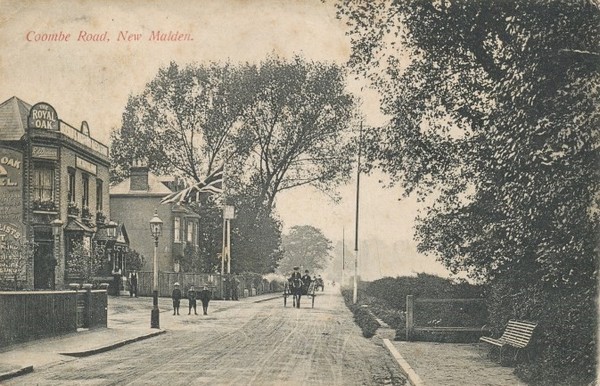
At some point Frederick and Elizabeth moved to 107 Coombe Road, quite close to Christ Church. The couple never had any children of their own and perhaps this is part of the reason why Elizabeth Bunn threw herself into the work of the Sunday School with so much energy and dedication.
The Sunday School movement in Britain had begun the late eighteenth century. Robert Raikes (1736-1811) is seen as the pioneer of a movement that was originally concerned to provide an education for children on the only day of the week when this was possible.
These provided basic lessons in literacy alongside Christian instruction. By 1831 Sunday Schools in Britain were teaching weekly, 1,250,000 children, approximately 25% of the population. Christians were at the forefront of week day education for children then expanding in the mid nineteenth century with the Raged School Union forming in 1844.
Christ Church began its own Day and Sunday School on 25th March 1867.
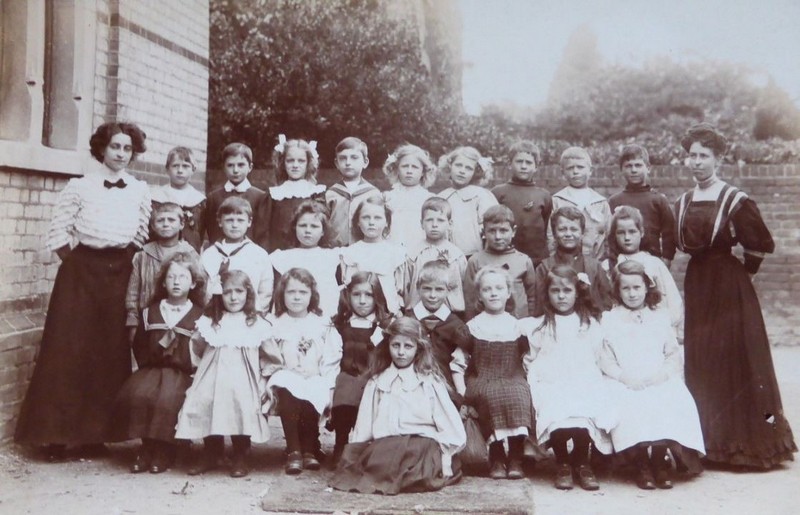
This was in the tin building previously used for ‘The Temporary Church of St James’ in Poplar Walk (now Poplar Grove). This was replaced three years later by Christ Church School in Lime Grove. In the same year, the 1870 Education Act obliged all local councils to set up School Boards to provide elementary education for those children not already catered for by church schools. The churches had to raise significant sums of money to retain control of their school rather than cede this to the School Boards and a strong priority was placed upon this at Christ Church. The education provided by Christ Church School was further expanded when the Elm Road building was completed in 1896. The result of all of this was a flourishing of educational provision for children in New Malden with Christ Church at the heart of this.
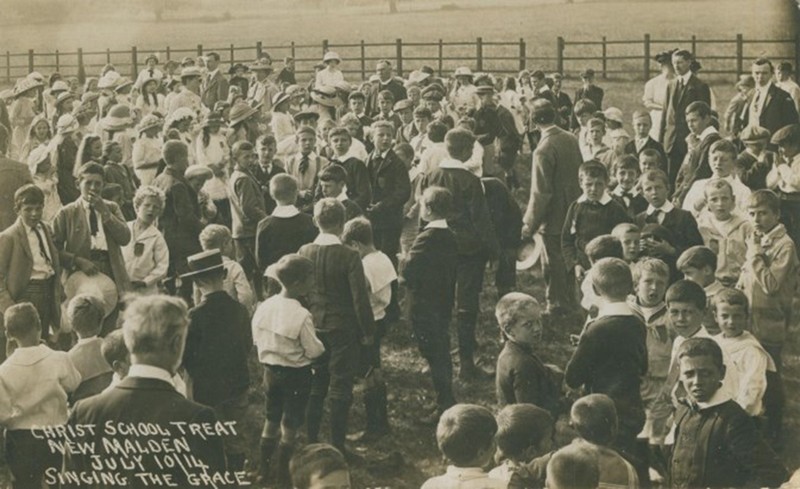
Against this background, the role of Sunday Schools inevitably changed. Freed from the role of promoting basic literacy and numeracy, Sunday Schools could encourage a more devotional approach and, within evangelical settings, a strong emphasis upon the personal decision to faith in Jesus Christ.
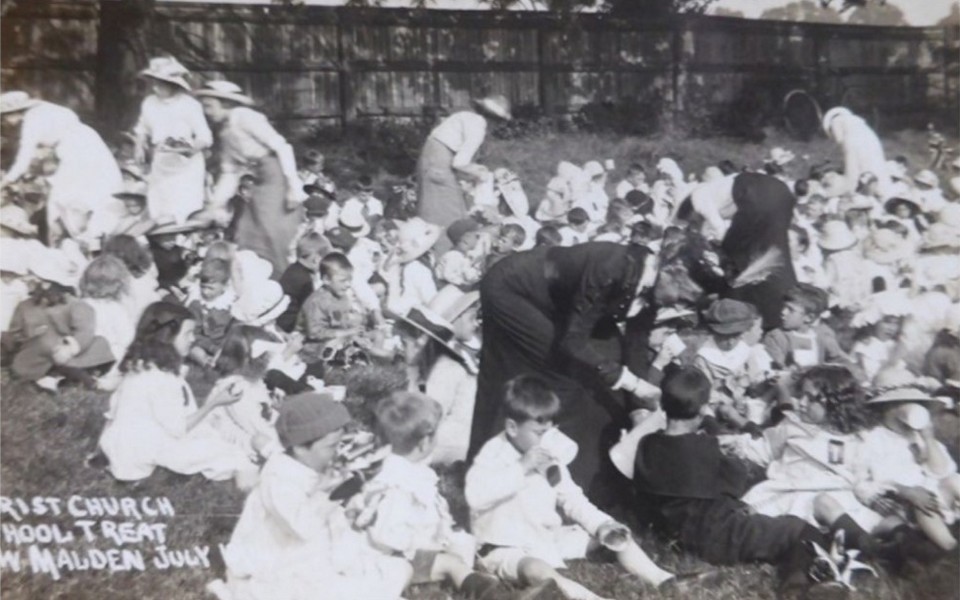
The Christ Church Sunday School that Elizabeth Bunn took over in 1909 met at 3.00 pm each Sunday afternoon in the Church Room. An iron building that was intended to be temporary, the Church Room had been built on the south side of Christ Church in 1900. Affectionately known as the ‘Tin Tab’, the building lasted for 81 years, until its demolition in May 1981.
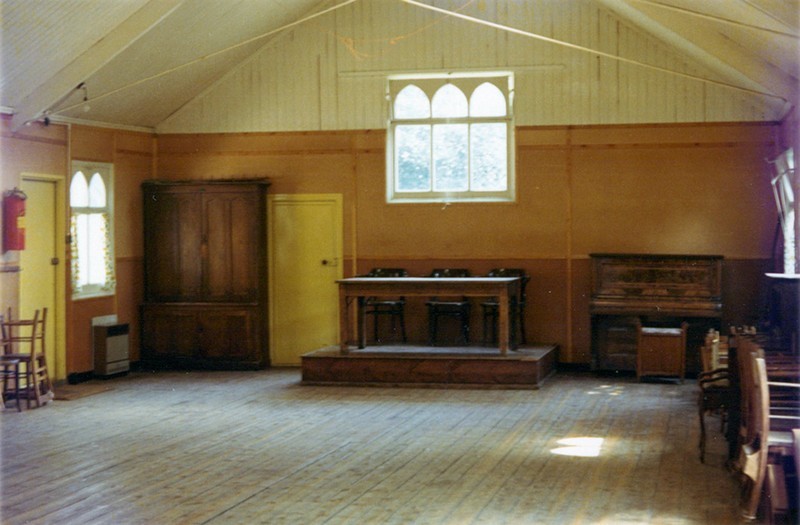
The Sunday School was well attended. For children there was little else to do on a Sunday afternoon and many of the parents encouraged their children’s attendance partly to get a couple of hours rest. Children from 3½ to 8 years old would attend and were taught stories from the Bible and encouraged to memorise verses from it. The children were tested on this and prizes awarded to those who did well at this. Hymns were sung and a weekly collection from the children was also taken up. Perhaps most crucially relationships were built up between the leaders and the children that modelled what following Jesus Christ was all about. The Sunday School also took part in the regular Church Parades down the High Street of New Malden and a number of photographs of these survive.
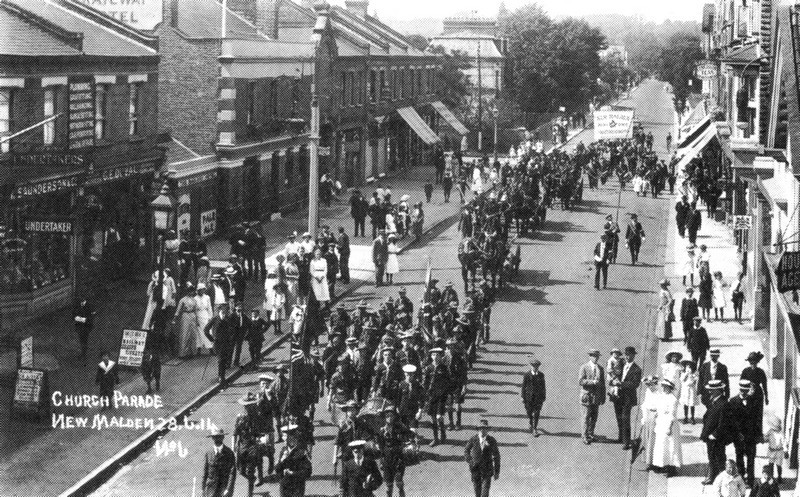
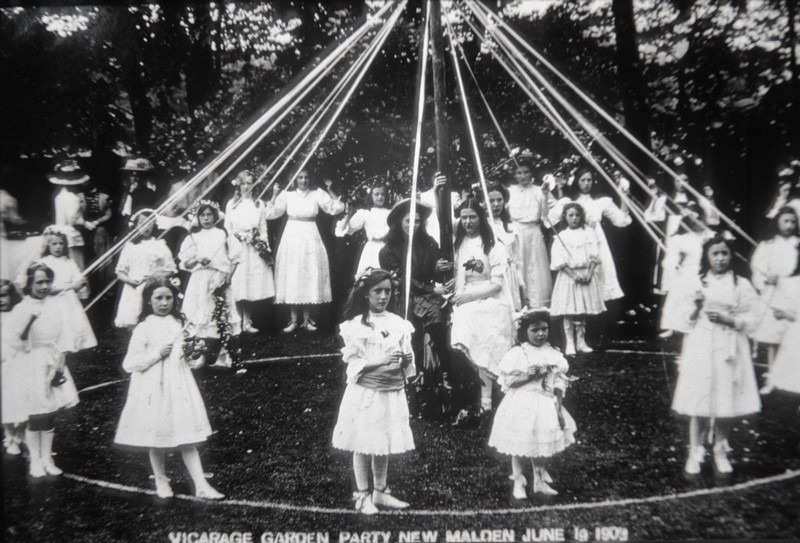
These developments also produced an interesting class differentiation within the provision for children at Christ Church. Both the Day School and Sunday School essentially catered for working class children. Those from a more middle class background were invited instead to a Bible class held at the Vicarage. Jessie Challacombe, Vicar’s wife from 1893-1920, led the Bible Class for girls. There was some criticism of the ‘class distinction’ since the majority of her girls went to private schools. But in the first Parish history written in 1952, William Authers declared of Mrs Challacombe: ‘The quiet charm and personality of a great leader’s influence became irresistible to many, and today her memory is revered by those who consider it a great privilege to have been one of her Class’. When she died in 1925, it was partly members of her Bible Class who provided the Oak Panelling in the Chancel in her memory.
All of this work provided an important outlet for women’s ministry, which was restricted through most of the nineteenth and twentieth centuries in a way that would be unrecognisable today. This of course strongly reflected gender roles in wider society. Even the constitution of the Parochial Church Council (PCC), formed at Christ Church for the first time in November 1897, stated explicitly that its members had to be men. Wealthier women such as Mrs Baring and Mrs Bevan were influential benefactors and the successive Vicar’s wives all had significant ministries. But for all the women at Christ Church, opportunities were restricted to involvement in groups for women, the visiting and help of poor people, care and decoration of the church and its furnishings and the leadership of children in the Sunday school.
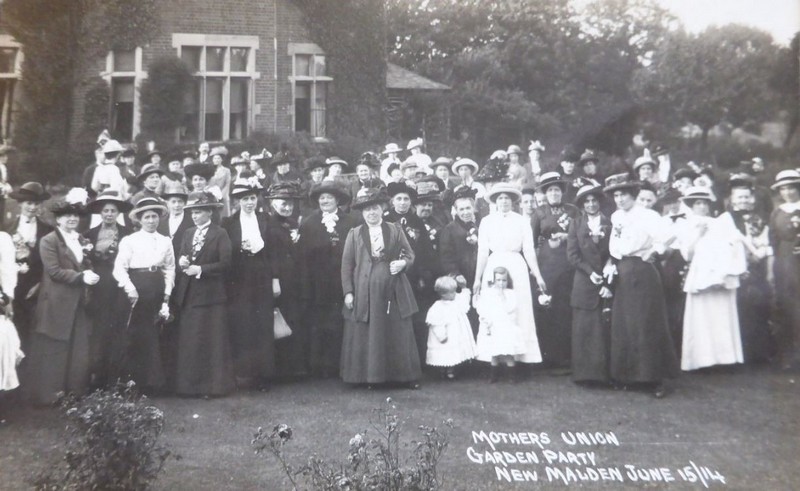
As the years went by, Mrs Bunn remained constant in her running of the Sunday School. So much so, that within two decades it was known as ‘Mrs Bunn’s Sunday School’. The First Parish History spoke of ‘her love for the children, her constancy and loyal endurance’. In 1954, there were 160 children’s names on the register and twelve teachers. One of Mrs Bunn’s Sunday School teachers was Beatrice or ‘Bee’ Authers, who had begun this role in the early 1920’s and became a later Superintendent.
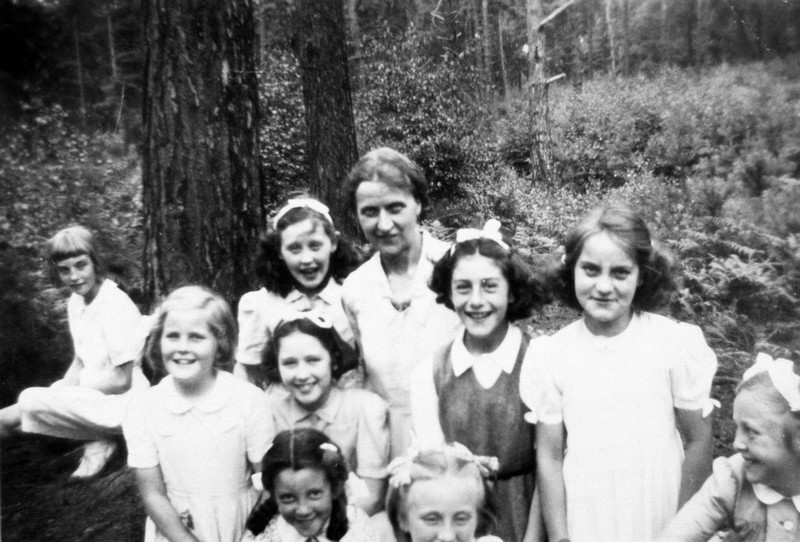
Another was Jeanne Burford (later Buchanan) who later went to Columbia as a missionary. By the 1950s, Mrs Bunn was, in the words of one former member of her Sunday school, ‘a lovely, kind old lady’ who was also remembered her as being ‘round and short’!
It was in January 1955 that Elizabeth Bunn finally decided to step down from being Superintendent of the Sunday School. The fifth Vicar of Christ Church, Claude Bartle wrote in the Parish Magazine: ‘It is with great regret that the resignation of Mrs Bunn has been received, after being Superintendent of our Sunday School for 46 years. I know that my predecessors will join me in thanking her for her devoted service through all those years. She will be remembered with great affection by the many pupils who passed through her hands, and by those who worked with her. A presentation was made by the teachers on her last Sunday. Let us pray that God will send the person of His choice to undertake this delightful but very responsible work in Mrs Bunn’s stead.’ Part of the reason for Mrs Bunn’s retirement may have been poor health. It’s rather surprising that no further account appeared in the magazine or subsequent ones about the significance of her ministry.
For a good numbers of years after her retirement from the Sunday School, however, Elizabeth and Frederick Bunn continued their regular worship at Christ Church. They sat at the front of services on the right hand side in front of the lectern and were noted for being extremely kind, polite and full of good humour. By that stage they lived in Rosebery Avenue.
Mrs Bunn died at the age of 81 on 9th March 1964. Once again the Parish Magazine was fairly meagre in its report of this with nothing like the coverage of her ministry that might have been expected. Under ‘In Memoriam’ the April 1964 Magazine simply said: ‘After many years of pain, borne with courage and triumphant faith Mrs Bunn was called into the presence of her Saviour on March 9th. For her it means the joy of fuller service to the Master she loved and served so faithfully as a member of Christ Church. Our prayers and sympathy are extended to her beloved husband in his sorrow and loneliness’.
By 1965 it was forty five years since any stained glass windows had been established at Christ Church. The building was plainer than it had been in earlier eras and it is probably true to say that there was greater reservations about the value of anything visual, with the chancel screen established in 1920 also removed at that time. It was nonetheless decided that Mrs Bunn would be remembered by the establishment of both a baptismal font and a stained glass window depicted the story of Jesus with Mary and Martha from Luke 10.38-42.
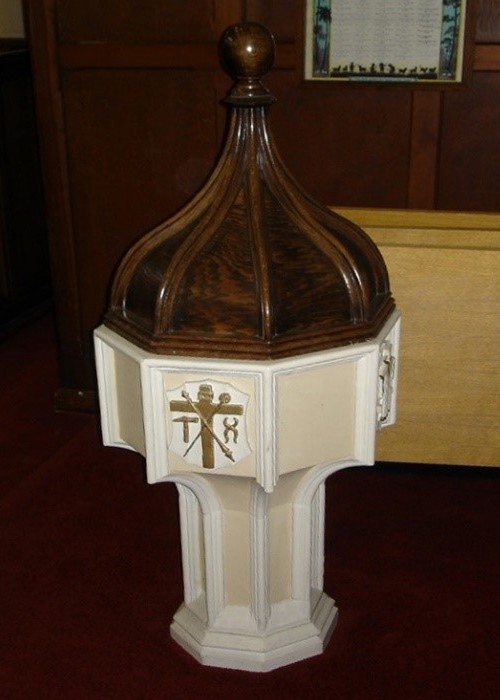
The sixth Vicar of Christ Church, the Reverend Llewellyn Roberts (1958-1968), seems to be have been less than enthusiastic about it with no mention of it in the Parish Magazine (which he edited), other than notice of a Canon T.G. Mohan coming to dedicate the new Baptistry and window given in memory of Mrs Bunn on Sunday 2nd May 1965. The font originally stood by the north wall before being moved to the head of south aisle near the window when the Christ Church Centre was built in 1981. It was eventually removed when the church was refurbished in 2006-7.
The window was made by Goddard and Gibbs, a firm founded in 1868.
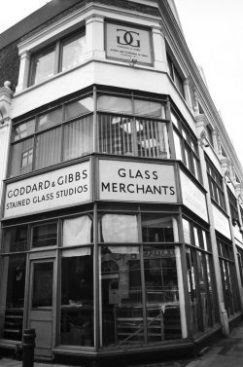
The firm’s head designer after the Second World War was Arthur Edward Buss (died 1999) and it was him who designed the window given in memory of Mrs Bunn. Similar in its format to those given in memory of Herbert Streeter (1896) and James and Mary Page (1912), it is strikingly different in its use of bolder colours and angular design. Buss learnt stained-glass techniques from Scottish artist William Aikman and his windows have been described as ‘balanced and informative, with fine figure drawing and well-researched heraldry’.
No specific information survives of why Jesus with Mary and Martha was chosen as the subject for the window. But its quotation at the top of the window: ‘Mary hath chosen that good part which shall not be taken from her’ (Luke 10.42 KJV) suggests that the story was a favourite one for Elizabeth Bunn as she taught literally thousands of children the importance of sitting, like Mary, at the Lord’s feet and listening to him.
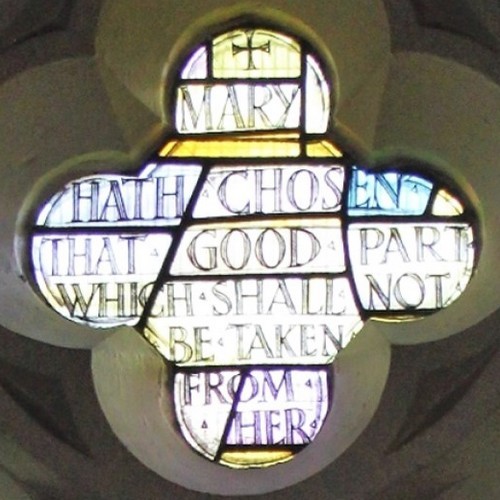
Frederick Bunn lived for a further four years after the death of his wife before he died in Eastbourne in 1969.
From 1959 the 3½-5 year olds of the Sunday School continued to meet in the ‘Tin Tab’ and the 5-8’s in the Parish Halls. From 1924 and 1941 older young people were served on Sunday afternoons by Kings Own Bible Class (14-18’s) and the Children’s Service (8-14’s). From 1931 a Young People’s Church (8-14’s) started on a Sunday morning and a Junior Young People’s Church (3½ to 8’s) from 1962. In 1975 the morning and afternoon groups merged to produce the Sunday morning format that we know today.
You can listen to the sermon from the Windows on the Gospel sermon series below.
| ‘I will give you the crown of life’ (1920) | ‘Gateway to Heaven’ (2001) |
